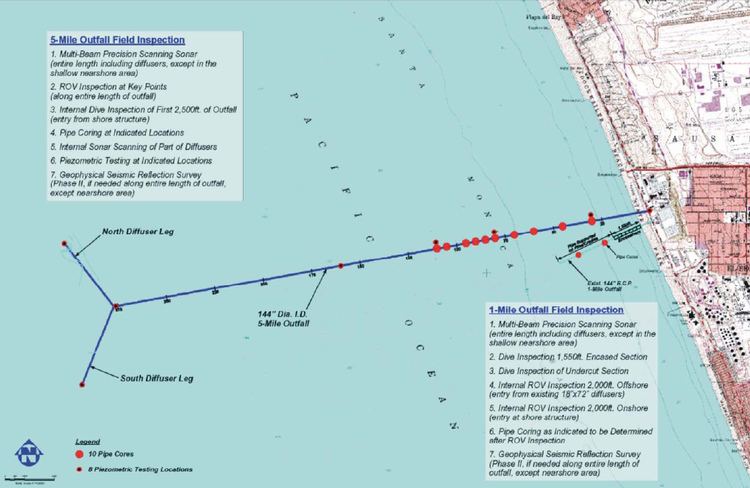 | ||
Uponor infra weholite marine outfall in vietnam
A marine outfall is a pipeline or tunnel that discharges municipal or industrial wastewater, stormwater, combined sewer overflows, cooling water, or brine effluents from water desalination plants to the sea. Usually they discharge under the sea's surface (submarine outfall). In the case of municipal wastewater, effluent is often being discharged after having undergone no or only primary treatment, with the intention of using the assimilative capacity of the sea for further treatment. Submarine outfalls are common throughout the world and probably number in the thousands. More than 200 outfalls alone have been listed in a single international database maintained by the Institute for Hydromechanics at Karlsruhe University for the International Association of Hydraulic Engineering and Research (IAHR) / International Water Association (IWA) Committee on Marine Outfall Systems.
Contents
- Uponor infra weholite marine outfall in vietnam
- Advantages
- Disadvantages
- Technology
- Examples
- Controversies
- References
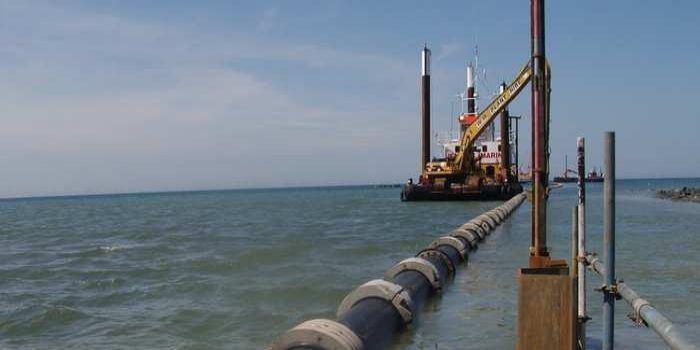
The World's first marine outfall was built in Santa Monica, United States, in 1910. In Latin America and the Caribbean there were 134 outfalls with more than 500 m length in 2006 for wastewater disposal alone, according to a survey by the Pan American Center for Sanitary Engineering and Environmental Sciences (CEPIS) of PAHO. According to the survey, the largest number of municipal wastewater outfalls in the region exist in Venezuela (39), Chile (39) and Brazil (22). The World's largest marine outfall is located in Boston, United States.Currently, Boston has approximately 235 miles of combined sewers and 37 active CSO outfalls. Lots of outfalls are simply known by a public used name, e.g. Boston Outfall.
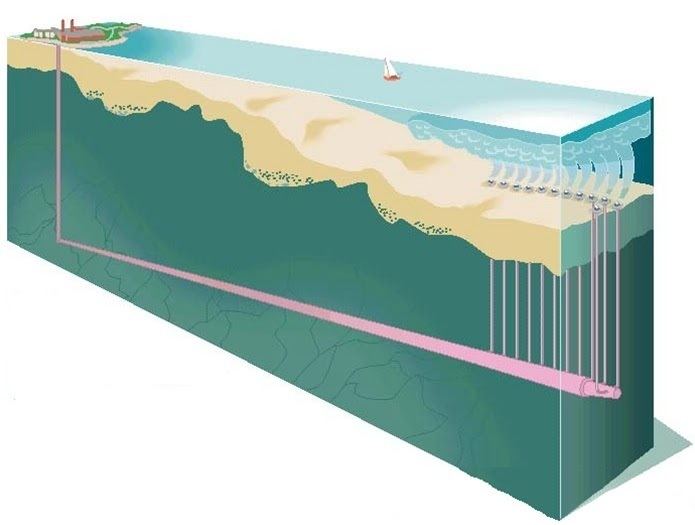
Advantages
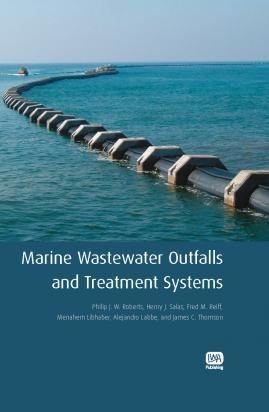
According to the Australian engineer Sharon Beder the main advantages of marine outfalls for the discharge of wastewater are:

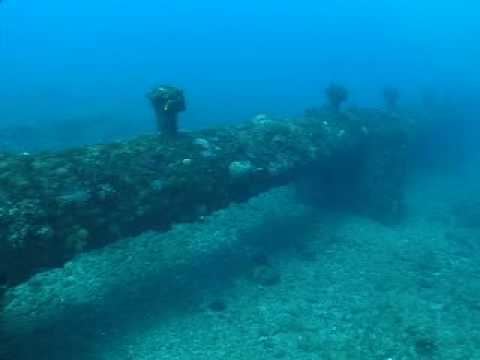
They also tend to be less expensive than advanced wastewater treatment plants, using the natural assimilative capacity of the sea instead of energy-intensive treatment processes in a plant. For example, preliminary treatment of wastewater is sufficient with an effective outfall and diffuser. The costs of preliminary treatment are about one tenth that of secondary treatment. Preliminary treatment also requires much less land than advanced wastewater treatment.
Disadvantages
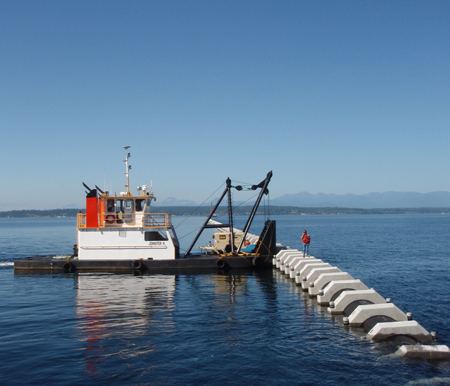
Marine outfalls for partially treated or untreated wastewater remain controversial. Still according to Sharon Beder, the design calculation and computer models for pollution modeling have been criticized, arguing that dilution has been overemphasized and that other mechanisms work in the opposite direction, such as bioaccumulation of toxins, sedimentation of sludge particles and agglomeration of sewage particles with grease. Accumulative mechanisms include slick formation, windrow formation, flocculate formation and agglomerated formation. Grease or wax can interfere with dispersion, so that bacteria and viruses could be carried to remote locations where the concentration of bacterial predators would be low and the die-off rate much lower.
Technology
Outfalls vary in diameter from as narrow as 15 cm to as wide as 8 m; the widest registered outfall in the world with 8 m diameter is located in Navia (Spain) for the discharge of industrial wastewater. Outfalls vary in length from 50 m to 55 km, the longest registered outfalls being the Boston outfall with a length of 16 km and an industrial outfall in Ankleshwar (India) with a length of 55 km. The depth of the deepest point of an outfall varies from 3 m to up to 60 m, the deepest registered outfall being located in Macuto, Vargas (Venezuela) for the discharge of untreated municipal wastewater.
Outfall materials include polyethylene, stainless steel, carbon steel, glass-reinforced plastic, reinforced concrete, cast iron or tunnels through rock. Common installation methods for pipelines are float and sink, bottom pull and top pull.
Examples
Submarine outfalls exist, existed or have been considered in the following locations, among many others:
Controversies
During the 1960s, the city of Sydney embarked on a project to construct ocean sewage outfalls, designed to release partially treated sewage 2–4 km offshore, at an expense of US$ 300 million. By the late 1980s, the government committed to enhancing the coastal treatment plants to ensure that sewage would undergo at least secondary treatment prior to being discharged into the ocean.
The submarine outfall in Cartagena, Colombia was financed with a loan by the World Bank. It was subsequently challenged by residents claiming that the wastewater caused damage to the marine environment and to fisheries. The case was taken up by the World Bank's Inspection Panel, which contracted two independent three-dimensional modeling efforts in 2006. Both "confirmed that the 2.85km long submarine outfall (was) adequate."
